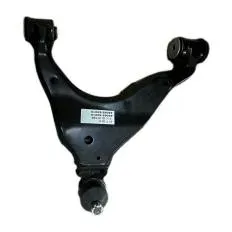
-
 Afrikaans
Afrikaans -
 Albanian
Albanian -
 Amharic
Amharic -
 Arabic
Arabic -
 Armenian
Armenian -
 Azerbaijani
Azerbaijani -
 Basque
Basque -
 Belarusian
Belarusian -
 Bengali
Bengali -
 Bosnian
Bosnian -
 Bulgarian
Bulgarian -
 Catalan
Catalan -
 Cebuano
Cebuano -
 Corsican
Corsican -
 Croatian
Croatian -
 Czech
Czech -
 Danish
Danish -
 Dutch
Dutch -
 English
English -
 Esperanto
Esperanto -
 Estonian
Estonian -
 Finnish
Finnish -
 French
French -
 Frisian
Frisian -
 Galician
Galician -
 Georgian
Georgian -
 German
German -
 Greek
Greek -
 Gujarati
Gujarati -
 Haitian Creole
Haitian Creole -
 hausa
hausa -
 hawaiian
hawaiian -
 Hebrew
Hebrew -
 Hindi
Hindi -
 Miao
Miao -
 Hungarian
Hungarian -
 Icelandic
Icelandic -
 igbo
igbo -
 Indonesian
Indonesian -
 irish
irish -
 Italian
Italian -
 Japanese
Japanese -
 Javanese
Javanese -
 Kannada
Kannada -
 kazakh
kazakh -
 Khmer
Khmer -
 Rwandese
Rwandese -
 Korean
Korean -
 Kurdish
Kurdish -
 Kyrgyz
Kyrgyz -
 Lao
Lao -
 Latin
Latin -
 Latvian
Latvian -
 Lithuanian
Lithuanian -
 Luxembourgish
Luxembourgish -
 Macedonian
Macedonian -
 Malgashi
Malgashi -
 Malay
Malay -
 Malayalam
Malayalam -
 Maltese
Maltese -
 Maori
Maori -
 Marathi
Marathi -
 Mongolian
Mongolian -
 Myanmar
Myanmar -
 Nepali
Nepali -
 Norwegian
Norwegian -
 Norwegian
Norwegian -
 Occitan
Occitan -
 Pashto
Pashto -
 Persian
Persian -
 Polish
Polish -
 Portuguese
Portuguese -
 Punjabi
Punjabi -
 Romanian
Romanian -
 Russian
Russian -
 Samoan
Samoan -
 Scottish Gaelic
Scottish Gaelic -
 Serbian
Serbian -
 Sesotho
Sesotho -
 Shona
Shona -
 Sindhi
Sindhi -
 Sinhala
Sinhala -
 Slovak
Slovak -
 Slovenian
Slovenian -
 Somali
Somali -
 Spanish
Spanish -
 Sundanese
Sundanese -
 Swahili
Swahili -
 Swedish
Swedish -
 Tagalog
Tagalog -
 Tajik
Tajik -
 Tamil
Tamil -
 Tatar
Tatar -
 Telugu
Telugu -
 Thai
Thai -
 Turkish
Turkish -
 Turkmen
Turkmen -
 Ukrainian
Ukrainian -
 Urdu
Urdu -
 Uighur
Uighur -
 Uzbek
Uzbek -
 Vietnamese
Vietnamese -
 Welsh
Welsh -
 Bantu
Bantu -
 Yiddish
Yiddish -
 Yoruba
Yoruba -
 Zulu
Zulu
lower forward control arm
The Importance of Lower Forward Control Arms in Vehicle Suspension Systems
The lower forward control arm is a critical component in many vehicles' suspension systems, playing a central role in ensuring stability, handling, and overall ride quality. This article delves into the significance of these components, how they function, and the potential implications of neglecting their maintenance.
Understanding the Functionality
The suspension system of a vehicle is designed to absorb shocks from uneven surfaces and provide a smooth ride, while also maintaining tire contact with the road. The lower forward control arm is a part of the independent suspension system. It connects the vehicle's chassis to the wheel hub and allows for vertical movement of the wheel in response to bumps and irregularities in the road.
One of the primary functions of the lower forward control arm is to enable the wheels to articulate properly while controlling the fore and aft movement of the wheel. This is particularly essential for maintaining proper alignment and ensuring that the tires are positioned evenly on the road. As the vehicle goes over bumps or corners, the control arms help to manage the angle and orientation of the wheels, preventing camber and toe misalignment, which can lead to irregular tire wear and poor handling.
Materials and Design
Lower forward control arms are typically made from a variety of materials, including stamped steel, aluminum, and reinforced plastics. The choice of material impacts not only the weight and cost but also the durability and performance of the control arm. For performance vehicles, lightweight materials such as aluminum are preferred because they reduce overall vehicle weight without sacrificing strength.
The design of control arms varies significantly, with some featuring more intricate geometries to improve performance characteristics. For instance, a double wishbone design can enhance handling and ride quality compared to a simple MacPherson strut setup.
lower forward control arm

Wear and Maintenance
Like any mechanical component, lower forward control arms are subject to wear and tear over time. Factors such as driving conditions, load, and material distribution can all influence their longevity. Common symptoms of a failing control arm include unusual noises from the suspension, poor alignment, and excessive tire wear.
Regular maintenance is crucial in ensuring the longevity of control arms. This includes periodic inspections to check for signs of wear, such as cracks, bends, or rust. It's also essential to examine the bushings connected to the control arms. These rubber or polyurethane components help dampen vibration and absorb shocks; when they wear out, they can cause increased noise and instability in the vehicle’s handling.
Upgrading Control Arms
For car enthusiasts and those interested in performance driving, upgrading the lower forward control arms can provide significant benefits. Aftermarket options are available that are designed to be more robust and offer improved performance characteristics over factory-installed components. These upgrades often feature better material choices, enhanced geometries, and the flexibility to adjust alignment settings more accurately.
It's important to note that upgrading control arms may alter the vehicle's geometry, which can lead to changes in handling characteristics. Therefore, any modifications should be followed by a professional alignment to ensure the vehicle remains safe and performs optimally.
Conclusion
The lower forward control arm is a vital element of a vehicle's suspension system, affecting everything from ride comfort to handling precision. Understanding its role, ensuring proper maintenance, and considering upgrades can dramatically enhance a vehicle’s performance and safety. For vehicle owners, recognizing the importance of this often-overlooked component could save time, money, and provide a safer driving experience on the road. Regular checks and balances in your vehicle’s maintenance regimen are essential not only for preserving the integrity of the lower forward control arms but also for ensuring the entire suspension system functions correctly. Investing in quality parts, whether OEM or aftermarket, can yield long-term benefits, enhancing your driving experience significantly.







